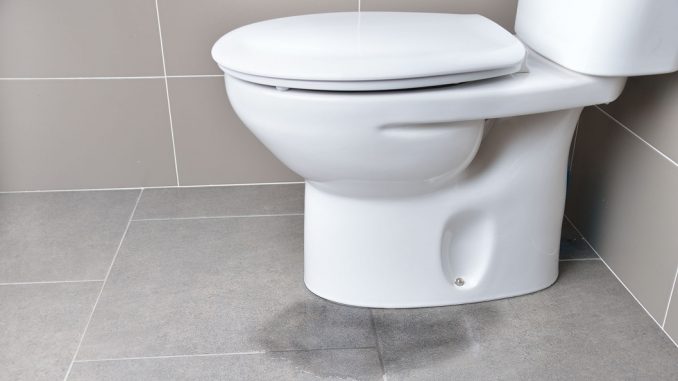
A crack in a toilet bowl is often a confusing problem. Where did it come from? If water is not leaking from it, is it an issue? Will it get worse if it is ignored? And ultimately, how do you fix a cracked toilet?
Toilet bowls crack for many reasons. Extreme temperature changes can play havoc with the ceramic, causing a sudden fracture. The crack may have been there since the toilet was manufactured but has only just surfaced after years of use. Or an incident may have caused the toilet bowl to become breached.
Whatever the reasoning, repairing a cracked toilet follows a simple process. You monitor, assess and then if necessary, fix the damage. The good news is that most leaking toilet bowls can be repaired without the need for a plumber. Here is our guide to cracked toilet bowl repair.
Where is the toilet bowl crack located?
Step one is to determine whether the crack in your toilet is located above the water level or below the water level, as this will inform the decisions you need to take for the rest of the process.
If the crack is in an area which water does not pass through, then it will not pose an immediate threat as water is unlikely to seep out – for now.
Cracks though can grow, so it is important to monitor the problem. Either mark the ends of the crack, record a measurement or take a photo.
Regularly checking the size of crack will inform you if it is getting any bigger or heading towards where water can be found. If the crack does start to move towards a water area, then a repair will be required.
If the crack is below the water level, then the issue should be fixed as soon as possible. Most repairs of this nature are straightforward and can be done in less than a day, unless the crack is significant and the complexity of the job requires a plumber or a toilet replacement.
Toilets can also suffer from hidden cracks not visible to the human eye. These are found inside bowls and tanks. They become noticeable when small, unexplained pools of water appear around a toilet.
If this is the case, inspect the inside of your system and you might discover a crack responsible for the problem.
How to fix a cracked toilet bowl
A waterproof epoxy putty is the best repair material to fix a toilet bowl crack with. An epoxy starts off as two soft materials. When the two parts are mixed, a chemical reaction occurs and the putty cures to become a rock-hard substance.
Whilst the curing process takes place, the putty is soft enough to form and shape. In terms of a cracked toilet repair, that means you can push the putty into the fracture in the ceramic when soft, after which it will harden to seal the crack.
Draining the toilet
The toilet needs to be drained before the repair can take place. Turn off the water supply to the toilet at the shut-off valve located near the tank.
Flush the toilet to drain all remaining water from the tank and bowl and then wipe the ceramic dry using a sponge.
Prepare the repair area
Epoxy putty works best on roughened surfaces, so the crack needs to undergo a little preparation before repair. Use sandpaper to sand the area down before rinsing it.
It is advisable to leave the crack to dry before applying epoxy putty as some putties are less effective on wet surfaces. If you are using a specialist wet surface epoxy putty then rather than waiting, you can crack on (pun intended) with the repair.
Use the epoxy putty to repair the toilet bowl crack
Epoxy putties come in different formulations for repairing different materials. For example, you can purchase putties which are steel-filled for metal repair or which replicate the feel, colour and texture of wood for use when repairing wood.
When it comes to repairing a toilet bowl crack, a ceramic-filled epoxy putty like Sylmasta AB Original is the best tool for the job.
It blends seamlessly with the existing ceramic both in terms of materially and colour-wise by setting to white. If a toilet is not white, then Sylmasta AB can be painted once cured to match.
To apply the epoxy putty, you mix the two parts in ratios as prescribed by the manufacturer. Push the putty into and around the crack and then smooth it off using a knife or spreader for the best possible appearance.
The cure time of the putty determines how long you have to work with it. Once it has begun to harden, it should be left to fully cure overnight or for however long is recommended by the manufacturer.
Refill the toilet and test the repair
Once the epoxy putty has been allowed to completely harden, you reopen the shut-off valve and fill the toilet with water again. After it has refilled, flush your toilet and check for any noticeable leaks.
If there are none, then the repair has been a success. If you still have a problem, then check for any other cracks in the toilet bowl which could be responsible, both exterior or interior. If you cannot locate another damage area and the problem persists, then it could be time to ask a plumber to take a look.

Leave a Reply